Superfund Sites in Reuse in Colorado
If you are having trouble viewing the map in your browser, click the 'View larger map' link below
Broderick Wood Products
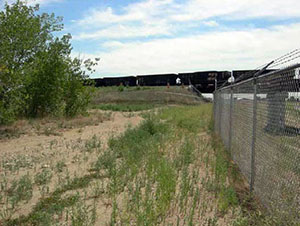 Broderick Wood ProductsThe Broderick Wood Products (BWP) Superfund site is located north of Denver, Colorado in unincorporated Adams County. BWP operated a wood-treating facility from 1947 to 1982 at the site. BWP treated power poles, fence posts, railroad ties and other wood products on the 64-acre property. Operators disposed of hazardous waste from the process in two unlined impoundments on site. In 1984, EPA listed the site on the Superfund program’s National Priorities List (NPL) due to contaminated groundwater, soil and sludge. Broderick Investment Company (BIC), the potentially responsible party, completed the bulk of the cleanup between 1989 and 1994. In 2003 and 2004, Union Pacific Railroad worked with EPA, the State and BIC to construct a rail line embankment across the site. As part of this project, parties made improvements to existing cleanup systems. In 2005, BIC constructed a second access road at the northern boundary. This road served as the primary access point and helped facilitate redevelopment of the site. In January 2007, BIC sold the majority of the site to Scott Contracting. In 2013, Scott Contracting sold the land to Brannon Sand & Gravel.
Broderick Wood ProductsThe Broderick Wood Products (BWP) Superfund site is located north of Denver, Colorado in unincorporated Adams County. BWP operated a wood-treating facility from 1947 to 1982 at the site. BWP treated power poles, fence posts, railroad ties and other wood products on the 64-acre property. Operators disposed of hazardous waste from the process in two unlined impoundments on site. In 1984, EPA listed the site on the Superfund program’s National Priorities List (NPL) due to contaminated groundwater, soil and sludge. Broderick Investment Company (BIC), the potentially responsible party, completed the bulk of the cleanup between 1989 and 1994. In 2003 and 2004, Union Pacific Railroad worked with EPA, the State and BIC to construct a rail line embankment across the site. As part of this project, parties made improvements to existing cleanup systems. In 2005, BIC constructed a second access road at the northern boundary. This road served as the primary access point and helped facilitate redevelopment of the site. In January 2007, BIC sold the majority of the site to Scott Contracting. In 2013, Scott Contracting sold the land to Brannon Sand & Gravel.
For more information:
California Gulch
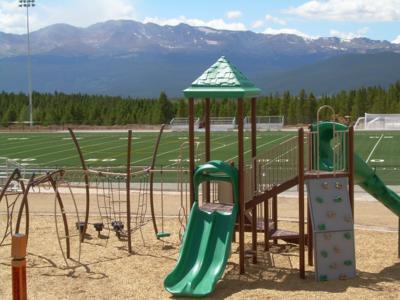 California GulchLocated in Lake County, Colorado, the 18-square-mile California Gulch Superfund site includes the City of Leadville and surrounding area. Beginning in 1857, prospectors and companies mined the area extensively for heavy metals. Mining operations left mining byproducts on site. These materials contain heavy metals that contaminated native soils and waterways, like the Arkansas River. EPA added the site to the Superfund program’s National Priorities List (NPL) in 1983. EPA has removed much of the site from the NPL as cleanup actions are completed. As a result, residents can continue living and working safely in Leadville during the site cleanup process. Over the years, EPA worked with the State, the local community and the site’s potentially responsible parties to coordinate ecological restoration work and redevelopment on specific portions of the site. In 1998, EPA and the State signed agreements to provide public access to open space near the Arkansas River. State and local governments purchased more than 2,300 acres of ranch land that serve as wildlife habitat and recreational resources. Another example of redevelopment is a $1.5 million public sports complex. The complex includes a soccer field built in 2009 on a former zinc smelter. One of EPA’s national partners, the United States Soccer Foundation, awarded a $10,000 grant to develop initial plans for the facility. Community support also led to the creation of a 21,000-square-foot concrete skate park that opened in fall 2013. This was one component of a community-driven initiative called the Huck Finn Park Project that will upgrade an existing Leadville park with new skating facilities, repaired tennis courts, and a new building for park equipment storage, restrooms and concessions. The community also incorporated reuse of remaining byproducts into the design of the Mineral Belt Trail, which opened in 2000. This nationally recognized recreational trail highlights the community’s history and heritage. Reuse of the California Gulch Superfund site now offers Leadville residents and visitors expanded recreational opportunities, including the Arkansas River Trail, a 5-mile loop along the Arkansas River. In 2014, the Colorado Parks and Wildlife Commission honored the site with a Gold Metal Trout Waters designation. The designation highlights the Upper Arkansas River’s improved water quality and revitalized habitats for trout and other wildlife.
California GulchLocated in Lake County, Colorado, the 18-square-mile California Gulch Superfund site includes the City of Leadville and surrounding area. Beginning in 1857, prospectors and companies mined the area extensively for heavy metals. Mining operations left mining byproducts on site. These materials contain heavy metals that contaminated native soils and waterways, like the Arkansas River. EPA added the site to the Superfund program’s National Priorities List (NPL) in 1983. EPA has removed much of the site from the NPL as cleanup actions are completed. As a result, residents can continue living and working safely in Leadville during the site cleanup process. Over the years, EPA worked with the State, the local community and the site’s potentially responsible parties to coordinate ecological restoration work and redevelopment on specific portions of the site. In 1998, EPA and the State signed agreements to provide public access to open space near the Arkansas River. State and local governments purchased more than 2,300 acres of ranch land that serve as wildlife habitat and recreational resources. Another example of redevelopment is a $1.5 million public sports complex. The complex includes a soccer field built in 2009 on a former zinc smelter. One of EPA’s national partners, the United States Soccer Foundation, awarded a $10,000 grant to develop initial plans for the facility. Community support also led to the creation of a 21,000-square-foot concrete skate park that opened in fall 2013. This was one component of a community-driven initiative called the Huck Finn Park Project that will upgrade an existing Leadville park with new skating facilities, repaired tennis courts, and a new building for park equipment storage, restrooms and concessions. The community also incorporated reuse of remaining byproducts into the design of the Mineral Belt Trail, which opened in 2000. This nationally recognized recreational trail highlights the community’s history and heritage. Reuse of the California Gulch Superfund site now offers Leadville residents and visitors expanded recreational opportunities, including the Arkansas River Trail, a 5-mile loop along the Arkansas River. In 2014, the Colorado Parks and Wildlife Commission honored the site with a Gold Metal Trout Waters designation. The designation highlights the Upper Arkansas River’s improved water quality and revitalized habitats for trout and other wildlife.
For more information:
- Recreation and Tourism Reuse and the Benefit to Community: California Gulch Case Study (2014) (PDF) (13 pp, 1.1 MB, About PDF)
- Video: Making a Difference in Communities: California Gulch Superfund Site, Leadville, Colorado Exit
- Video: California Gulch: From Metals to Medals Exit
- Video: California Gulch: Revitalizing the Future of a Mining Mega Site Exit
- Superfund Site Profile Page
Central City, Clear Creek
The 400-square-mile Central City, Clear Creek Superfund site includes the former mining towns of Central City and Black Hawk, Colorado. For almost a century, vast deposits of gold and silver ores in the area supported a profitable mining industry. In the early 1900s, business in Central City and Black Hawk dramatically declined. This decline left the towns with a weakened economy and deteriorating infrastructure. The mining industry also left behind waste rock and mine tailings that contaminated the Clear Creek watershed. In 1983, EPA added the site to the Superfund program’s National Priorities List (NPL). In partnership with the State, EPA conducted the cleanup in stages. After Colorado amended its laws to allow gaming in the former mining towns, parties worked with casino developers to clean up portions within the two towns so the property could support casinos, hotels and restaurants. As parties developed the former mining property for the casinos, they carried out cleanup actions. In 2009, the federal government awarded the site $2.16 million in American Reinvestment and Recovery Act (ARRA) funding. This funding supported the consolidation and capping of additional mine waste piles, implementation of sediment and drainage controls, and water treatment to restore Clear Creek. One goal of the site’s cleanup is to protect the Clear Creek watershed. The watershed provides recreational opportunities to the community, including rafting, kayaking and fishing. Cleanup efforts continue at the site.
For more information:
Chemical Sales Co.
The 5-square-mile Chemical Sales Co. (CSC) Superfund site is located in a mainly light-industrial area of Denver, Colorado. Residential, commercial and municipal land uses are located within the site. CSC, a wholesale distributor of commercial and industrial chemicals, detergents and water leisure products, began occupying the warehouse in 1976. CSC activities led to the contamination of soil on the warehouse property and area groundwater. In 1989, EPA removed leaking and corroded drums from the CSC property. EPA listed the site on the Superfund program’s National Priorities List (NPL) in 1990. Acting on behalf of EPA, the State began additional cleanup actions in 1989. Treatment of groundwater and soil vapors continue. Between 1986 and 1995, the public water district connected over 400 residences to the municipal water supply. Groundwater and land use restrictions are in place at the site. ACME Metals purchased the property from CSC in 1995. ACME Metals continues to operate on the site.
For more information:
Denver Radium Site
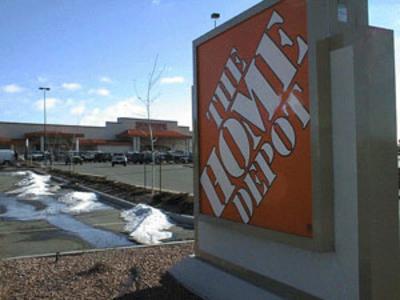 Denver Radium SiteThe Denver Radium Superfund site, located in Denver, Colorado, consists of over 65 properties along the South Platte River Valley. In the early 1900s, Denver ore-processing facilities provided a domestic source of radium for the demand of nearby businesses. After the radium industry's collapse in the 1920s, radioactive substances remained in numerous locations throughout the Denver area. Parties often used these substances as fill or for paving materials. EPA listed the site on the Superfund program’s National Priorities List (NPL) in 1983. Most of the Denver Radium properties support commercial or industrial uses, although there are public service uses, a few residential properties and some open space included in the site as well. EPA and the State of Colorado designed a flexible cleanup plan that would protect human health and the environment while allowing for future redevelopment. Redevelopment has taken place at several of the cleaned-up properties. Home Depot USA, Inc. (Home Depot) selected a portion of the site for the location of one of their retail stores. Home Depot worked with EPA to understand site conditions. Cleanup work at the Home Depot location included covering contaminated soils with a protective soil cap designed for the store's parking lot. EPA developed a Prospective Purchaser Agreement (PPA) and a Covenant Not to Sue to address Home Depot's concerns regarding the company’s potential responsibility for previous contamination at the site. The requirements of the PPA ensured the site’s soil cap maintenance over time, protecting people from any contaminants. Other redevelopment activities at the site have included the construction of Ruby Hill Park, which provides a community swimming pool and other recreational activities for the community.
Denver Radium SiteThe Denver Radium Superfund site, located in Denver, Colorado, consists of over 65 properties along the South Platte River Valley. In the early 1900s, Denver ore-processing facilities provided a domestic source of radium for the demand of nearby businesses. After the radium industry's collapse in the 1920s, radioactive substances remained in numerous locations throughout the Denver area. Parties often used these substances as fill or for paving materials. EPA listed the site on the Superfund program’s National Priorities List (NPL) in 1983. Most of the Denver Radium properties support commercial or industrial uses, although there are public service uses, a few residential properties and some open space included in the site as well. EPA and the State of Colorado designed a flexible cleanup plan that would protect human health and the environment while allowing for future redevelopment. Redevelopment has taken place at several of the cleaned-up properties. Home Depot USA, Inc. (Home Depot) selected a portion of the site for the location of one of their retail stores. Home Depot worked with EPA to understand site conditions. Cleanup work at the Home Depot location included covering contaminated soils with a protective soil cap designed for the store's parking lot. EPA developed a Prospective Purchaser Agreement (PPA) and a Covenant Not to Sue to address Home Depot's concerns regarding the company’s potential responsibility for previous contamination at the site. The requirements of the PPA ensured the site’s soil cap maintenance over time, protecting people from any contaminants. Other redevelopment activities at the site have included the construction of Ruby Hill Park, which provides a community swimming pool and other recreational activities for the community.
For more information:
Eagle Mine
The Eagle Mine Superfund site is located in Eagle County, Colorado, about 1 mile from Minturn and 75 miles west of Denver. Beginning in the 1880s, the 110-acre Eagle Mine site operated as a gold and silver mine. In 1938, Eagle Mine transitioned to support zinc mining, which left high levels of metals in the soil, surface water and groundwater. In 1977, zinc mining operations ended. Copper and silver mining and production continued at Eagle Mine until it closed in 1984. EPA added the site to the Superfund program’s National Priorities List (NPL) in 1986. Cleanup included the removal of contaminated soils and sediments; the containment of mine seepage and run-off; the monitoring of surface water, groundwater, pool water and stream water; and land use controls. The potentially responsible party conducted most cleanup actions between 1989 and 2001. After cleanup, community members began using the adjacent Eagle River again for recreational purposes, such as fishing. In 2004, a developer purchased 750 acres of site property with the intention of building a private, residential golf course community. In 2009, a new developer took over the project with less ambitious redevelopment plans. EPA and the State are currently working with the developer to make sure that all necessary investigation and cleanup steps occur to prepare the property for residential redevelopment. Groundwater treatment and monitoring continues at the site.
Lincoln Park
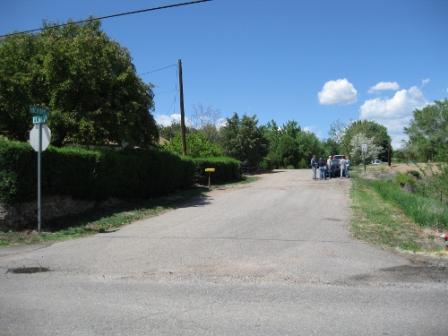 Lincoln ParkThe Lincoln Park Superfund site includes about 5-square-miles of suburban and rural land located about 2 miles south of Canon City, Colorado. The site consists of a former uranium/molybdenum processing mill and contamination resulting from the mill operations. From 1958 until 1987, the Cotter Corporation Uranium Mill produced uranium and radioactive substances in support of the Atomic Energy Commission. During operations, workers released waste into unlined ponds. During a flood in 1965, waste materials overflowed into nearby Sand Creek and a downstream residential area called Lincoln Park. As a result of uranium-processing waste reaching area soil, surface water and groundwater, EPA added the site to the Superfund program’s National Priorities List (NPL) in 1984. The Cotter Corporation agreed to perform cleanup actions. Cleanup included construction of a clay barrier to contain contaminated groundwater and a pump system to collect contaminated groundwater. The responsible party also removed contaminated sediments from Sand Creek. The mill is currently in the process of being decommissioned and cleanup is ongoing. Many properties at the site, including the community of Lincoln Park, continue to serve as residences, agricultural farms, grazing lands and commercial businesses, including a golf course.
Lincoln ParkThe Lincoln Park Superfund site includes about 5-square-miles of suburban and rural land located about 2 miles south of Canon City, Colorado. The site consists of a former uranium/molybdenum processing mill and contamination resulting from the mill operations. From 1958 until 1987, the Cotter Corporation Uranium Mill produced uranium and radioactive substances in support of the Atomic Energy Commission. During operations, workers released waste into unlined ponds. During a flood in 1965, waste materials overflowed into nearby Sand Creek and a downstream residential area called Lincoln Park. As a result of uranium-processing waste reaching area soil, surface water and groundwater, EPA added the site to the Superfund program’s National Priorities List (NPL) in 1984. The Cotter Corporation agreed to perform cleanup actions. Cleanup included construction of a clay barrier to contain contaminated groundwater and a pump system to collect contaminated groundwater. The responsible party also removed contaminated sediments from Sand Creek. The mill is currently in the process of being decommissioned and cleanup is ongoing. Many properties at the site, including the community of Lincoln Park, continue to serve as residences, agricultural farms, grazing lands and commercial businesses, including a golf course.
For more information:
- Lincoln Park, Fremont County, Colorado - Reuse Assessment (PDF)(8 pp, 12.2 MB, About PDF)
- Superfund Site Profile Page
Lowry Landfill
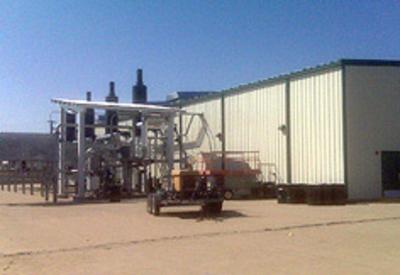 Lowry LandfillThe 480-acre Lowry Landfill Superfund site is located in Aurora, Colorado. In 1964, the former owner of the land deeded the site to the City and County of Denver. The City and County of Denver operated the site as a municipal landfill from the mid-1960s until 1984. The landfill accepted industrial and municipal wastes. After 1984, the site continued to accept municipal solid waste until 1990. Storage practices on site resulted in toxic gas, contaminated groundwater and soils. As a result, EPA added the site to the Superfund program’s National Priorities List (NPL) in 1984. EPA’s cleanup activities include a groundwater barrier wall, a groundwater treatment plant, a landfill cover and a landfill gas collection system. After EPA completed construction of cleanup components, the City of Denver, Waste Management and local utility Xcel Energy partnered to find a use for the site’s landfill gas. In July 2007, construction began on a landfill gas-to-energy plant at Lowry Landfill and the adjoining Denver Arapahoe Disposal site. The plant, which opened in September 2008, uses four combustion engines to convert 630 million cubic feet of methane gas annually from both sites into 3.2 megawatts of electrical power. This process reduces greenhouse gases and provides electricity for about 3,000 households. The plant will remove about 5,000 tons of methane from the landfill annually. This is the equivalent of removing 22,000 cars from the road each year.
Lowry LandfillThe 480-acre Lowry Landfill Superfund site is located in Aurora, Colorado. In 1964, the former owner of the land deeded the site to the City and County of Denver. The City and County of Denver operated the site as a municipal landfill from the mid-1960s until 1984. The landfill accepted industrial and municipal wastes. After 1984, the site continued to accept municipal solid waste until 1990. Storage practices on site resulted in toxic gas, contaminated groundwater and soils. As a result, EPA added the site to the Superfund program’s National Priorities List (NPL) in 1984. EPA’s cleanup activities include a groundwater barrier wall, a groundwater treatment plant, a landfill cover and a landfill gas collection system. After EPA completed construction of cleanup components, the City of Denver, Waste Management and local utility Xcel Energy partnered to find a use for the site’s landfill gas. In July 2007, construction began on a landfill gas-to-energy plant at Lowry Landfill and the adjoining Denver Arapahoe Disposal site. The plant, which opened in September 2008, uses four combustion engines to convert 630 million cubic feet of methane gas annually from both sites into 3.2 megawatts of electrical power. This process reduces greenhouse gases and provides electricity for about 3,000 households. The plant will remove about 5,000 tons of methane from the landfill annually. This is the equivalent of removing 22,000 cars from the road each year.
For more information:
Marshall Landfill
The 160-acre Marshall Landfill Superfund site is located in Boulder, Colorado. Starting in 1965, the landfill accepted sewage sludge and unknown wastes in addition to municipal waste. City officials raised concerns about contamination of chemicals and dissolved metals in drinking water supplies. As a result, EPA added the site to the Superfund program’s National Priorities List (NPL) in 1983. Cleanup activities have included operating a groundwater treatment system and maintaining the landfill cover. Groundwater monitoring is ongoing. In 1986, EPA required tracking additional chemical compounds in groundwater samples. Remedy construction reached completion in August 1993. In 2013, solar developer Clean Energy Collective completed construction of a 500-kilowatt solar project adjacent to the site. EPA helped facilitate the location of the solar array, while ensuring that groundwater monitoring functioned properly. In 2010, legislation passed requiring tax rebates for community-owned solar programs. The project is the first community solar program of Xcel Energy’s Clean Energy Collective. Builders projected the solar array will produce 830,000 kilowatts of power in the first year, and reduce carbon dioxide output by 15,000 tons in the first 20 years. The site demonstrates how reuse can be effectively coordinated with remedy components.
For more information:
Rocky Mountain Arsenal (USARMY)
The Rocky Mountain Arsenal (USARMY) Superfund site is located just 10 miles northeast of downtown Denver, Colorado. The once-contaminated site now provides visitors with recreational and educational opportunities and local wildlife a place to call home. The site’s successful transformation into the Rocky Mountain Arsenal National Wildlife Refuge and visitor center included an extensive cleanup to address contamination from prior military operations and pesticide manufacturing. As early as 1942, the U.S. Army used the property for the production of chemical weapons such as mustard gas, white phosphorus and napalm. Just after World War II, the Shell Chemical Company leased portions of the site for the production of pesticides. Common industrial and waste disposal practices during those years resulted in contamination of structures, soil, surface water and ground water. By the late 1950s, apparent crop damage north of the Rocky Mountain Arsenal was an indication of contaminated ground water. In 1987, EPA added the site to the National Priorities List (NPL). EPA, the U.S. Army, Shell Oil and the state began a major environmental cleanup to address the contaminated ground water, surface water, soil and buildings. In 1992, Congress passed the Refuge Act, which designated the transfer of cleaned-up site lands for use as a wildlife refuge. As cleanup continued, the U.S. Fish and Wildlife Service made areas of the site available for environmental education and wildlife viewing for visitors. EPA has completed five partial deletions at the site, removing cleaned portions of the site from the NPL. These five partial deletions created opportunities for local road expansions, the development of a 24-field soccer complex and music venue known as Prairie Gateway, and expansion of the wildlife refuge. The American Recovery and Reinvestment Act of 2009 provided about $3 million for a new visitor center at the Rocky Mountain Arsenal Wildlife Refuge. Thousands of visitors are reaping the benefits annually. Construction efforts for the new visitor center used green construction techniques, including recycled pavement and reflective roofing materials to reduce the need for air conditioning. The Rocky Mountain Arsenal Wildlife Refuge Visitor Center opened to visitors in May 2011. In addition, in 2009, EPA issued a Ready for Reuse (RfR) Determination for 294 acres along the northern edge of the site. The RfR Determination designated the surface as ready for residential use with appropriate operation and maintenance procedures in place.
For more information:
Smeltertown Site
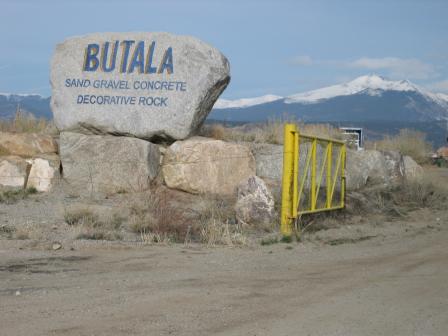 Smeltertown SiteThe 120-acre Smeltertown Superfund Site is located near Salida, in Chaffee County, Colorado. Many industrial businesses operated on site over the past century, including lead-zinc smelting and wood-treating businesses. The Ohio and Colorado Smelting and Refining Company, and later the Trinchera Timber Company, operated on site. Company operations left contamination, soil, groundwater and surface water contamination. Timber operations ended in 1965 when the Butala Construction Company began using the land for sand and gravel mining. EPA began investigating the site in 1986, and selected cleanup plans for the site in 1996 and 1998. The companies responsible for the contamination removed and placed contaminated materials in an on-site capped repository. In addition, construction of a fence around the capped repository took place. Monitoring of groundwater, as well as surface water of the adjacent Arkansas River are ongoing. Institutional controls restrict land and groundwater use. The Butala Construction Company still runs a sand and gravel quarry on the property. The National Park Service listed the 365-foot smokestack from the former smelter on the National Register of Historic Places in 1976. In 2014, a highway marker and on-site historic markers for the smokestack serve to highlight the property as a local tourist attraction.
Smeltertown SiteThe 120-acre Smeltertown Superfund Site is located near Salida, in Chaffee County, Colorado. Many industrial businesses operated on site over the past century, including lead-zinc smelting and wood-treating businesses. The Ohio and Colorado Smelting and Refining Company, and later the Trinchera Timber Company, operated on site. Company operations left contamination, soil, groundwater and surface water contamination. Timber operations ended in 1965 when the Butala Construction Company began using the land for sand and gravel mining. EPA began investigating the site in 1986, and selected cleanup plans for the site in 1996 and 1998. The companies responsible for the contamination removed and placed contaminated materials in an on-site capped repository. In addition, construction of a fence around the capped repository took place. Monitoring of groundwater, as well as surface water of the adjacent Arkansas River are ongoing. Institutional controls restrict land and groundwater use. The Butala Construction Company still runs a sand and gravel quarry on the property. The National Park Service listed the 365-foot smokestack from the former smelter on the National Register of Historic Places in 1976. In 2014, a highway marker and on-site historic markers for the smokestack serve to highlight the property as a local tourist attraction.
For more information:
Smuggler Mountain
The 110-acre Smuggler Mountain Superfund site is located in Aspen, Colorado. Between 1879 and 1920, silver and lead mines operated on site. Mining and smelting activities created byproducts and waste materials containing metals and lead. Piles of exposed waste materials eventually spread and mixed with area soils. In the 1980s, soil analyses by residents and EPA identified high levels of lead and cadmium. To address area-wide contamination, EPA added the site to the Superfund program’s National Priorities List (NPL) in 1986. The site cleanup focused on the original mine site, Smuggler Mine, and the northeastern edge of Aspen. Pitkin County and New Smuggler Mine Corporation conducted cleanup actions. Cleanup included covering areas of mine waste and replanting those areas with vegetation. The parties also secured areas of the mine to prevent further contamination and tested blood-lead levels of area residents. After completing cleanup, EPA deleted the site from the NPL in September 1999. Cleanup under Superfund has enabled reuse and active redevelopment at the site, which includes large and small condominiums, mobile home parks, a tennis club and numerous single-family residences. The successful cleanup also allowed a local company to reopen the mine in an effort to extract silver. While silver mining activities continue, the company has opened the mine for tourist, generating income and jobs in the community.
For more information:
Summitville Mine
The 1,400-acre Summitville Mine Superfund site is a former gold mine located in Rio Grande County, Colorado. The site sits at an elevation of 11,000 feet near the timberline in the San Juan Range of the Colorado Rockies. The area served as a gold mine beginning in the late 1800s. By 1984, the Summitville Consolidated Mining Corporation Inc. began open pit mining for gold, copper and silver. Mining processes contaminated the surrounding area, including Wightman Fork Creek and Terrace Reservoir. Mining operations did not cease until the company announced pending bankruptcy and informed the State of Colorado that financial support for site operations would not continue beyond December 15, 1992. On December 16, 1992, The U.S. EPA Region 8 assumed control of the site and immediately began emergency removals of contaminated sediment and soil. EPA placed the site on the National Priorities List (NPL) in 1994. Today, EPA and the state are working to reclaim and re-vegetate 1,231 acres of the site scarred by the long history of mining, and to prevent further contamination of surrounding creeks and streams. The community has remained involved in the cleanup by hiring an independent technical advisor to review cleanup issues and help keep the community informed. During 2008, EPA Region 8 and the state made significant progress toward the installation of a hydroelectric power system at the site, completing construction of the inlet structure. In 2010, EPA Region 8 and the state built the powerhouse and installed the 35-kilowatt turbine. The plant became operational in 2011. Energy produced by the plant feeds back into the grid, offsetting the costs of operating the site remedy. In 2009, the site received $17 million in American Reinvestment and Recovery Act (ARRA) funds to construct the Summitville water treatment plant. Completed in 2011, the new water treatment plant removes high metals concentrations from acid mine drainage originating at the site. Cleanup is ongoing to permanently stabilize the site and reverse the adverse effects of mining, while restoring the ecosystem and protecting farmlands.
For more information:
Uravan Uranium Project (Union Carbide Corp.)
The approximately 700-acre Uravan Uranium Project (Union Carbide Corp.) Superfund site is located in Uravan, Colorado. The site began operations as a radium-recovery plant in 1912. From the 1940s until 1984, the plant operated as a uranium and vanadium processing facility. Site activities left a large amount of waste on the site and caused the contamination of soil and ground water. EPA placed the site, which included the town of Uravan, on the National Priorities List (NPL) in 1986. The cleanup plan for the site involved moving more than 3 million cubic yards of mill wastes and contaminated materials located along the San Miguel River to secure repositories on Club Mesa. The plan also included the removal and cleanup of materials and contaminated soil from about 400 acres. As part of the cleanup, remedial crews dismantled and disposed of on-site mills and other structures, and conducted additional cleanup at the former town of Uravan. Successful cleanup of the site reached completion in 2008. Recreational activities surrounding the site include, but are not limited to, hunting, fishing, camping and rafting. Limited mine reclamation and exploration drilling activities take place in the area surrounding the site. Land use on the site is mostly fall and winter grazing of beef cattle. In the future, the potentially responsible party expects to transfer parts of the site to the Department of Energy (DOE) Legacy Management program. The DOE program will conduct long-term maintenance and surveillance of the repositories. Site stakeholders expect that the potentially responsible party will transfer other portions of the site to the Bureau of Land Management (BLM) and Montrose County.
For more information:
Vasquez Boulevard and I-70
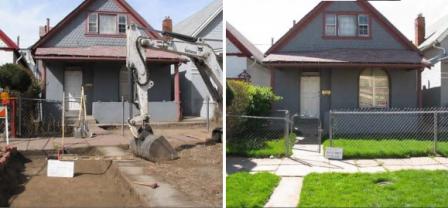 Vasquez Boulevard and I-70The Vasquez Boulevard and Interstate-70 Superfund site covers 4.5 square miles in Denver, Colorado. The former Omaha & Grant Smelter, the Argo Smelter and the ASARCO Globe Plant operated on the site. Smelting operations began as early as 1878, and left contamination in soil and groundwater. EPA added the site to the Superfund program’s National Priorities List (NPL) in July 1999. Cleanup activities included sampling of over 4,500 residential properties and subsequent removal of contaminated soil and replacement with new soil at about 800 residential properties. Investigations and additional activities to remove contaminated materials are ongoing. As part of the cleanup, EPA and the Colorado Department of Public Health and Environment (CDPHE) began a Community Health Program addressing health risks, particularly among young children living in the region. The Union Pacific Railroad Company and the Pepsi Bottling Company use the site. Various other corporate commercial and industrial businesses continue to own or operate on portions of the former smelting facilities. The Denver Coliseum and other businesses occupy the former Omaha & Grant Company smelter. Local residents continue to live on residential properties on site, the majority of which are single family homes. Also, 10 schools and seven parks on the site, including the Globeville Landing Park, remain in use. Additional cleanup activities are underway to remove waste material from underneath the Denver Coliseum parking lot and create an open drainage basin to help with stormwater management. The open drainage basin will provide sustainable, natural habitat and a recreational area including walking and biking paths. EPA is working closely with the State and the City and County of Denver to expedite the cleanup activities so additional redevelopment projects can begin.
Vasquez Boulevard and I-70The Vasquez Boulevard and Interstate-70 Superfund site covers 4.5 square miles in Denver, Colorado. The former Omaha & Grant Smelter, the Argo Smelter and the ASARCO Globe Plant operated on the site. Smelting operations began as early as 1878, and left contamination in soil and groundwater. EPA added the site to the Superfund program’s National Priorities List (NPL) in July 1999. Cleanup activities included sampling of over 4,500 residential properties and subsequent removal of contaminated soil and replacement with new soil at about 800 residential properties. Investigations and additional activities to remove contaminated materials are ongoing. As part of the cleanup, EPA and the Colorado Department of Public Health and Environment (CDPHE) began a Community Health Program addressing health risks, particularly among young children living in the region. The Union Pacific Railroad Company and the Pepsi Bottling Company use the site. Various other corporate commercial and industrial businesses continue to own or operate on portions of the former smelting facilities. The Denver Coliseum and other businesses occupy the former Omaha & Grant Company smelter. Local residents continue to live on residential properties on site, the majority of which are single family homes. Also, 10 schools and seven parks on the site, including the Globeville Landing Park, remain in use. Additional cleanup activities are underway to remove waste material from underneath the Denver Coliseum parking lot and create an open drainage basin to help with stormwater management. The open drainage basin will provide sustainable, natural habitat and a recreational area including walking and biking paths. EPA is working closely with the State and the City and County of Denver to expedite the cleanup activities so additional redevelopment projects can begin.
For more information:
